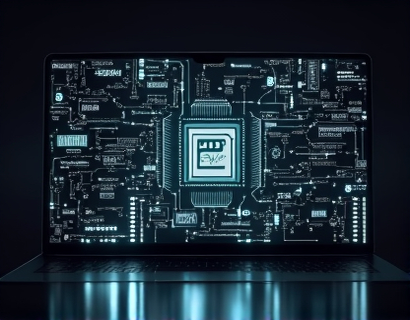Mastering DeFi: Unlocking the Potential of a Next-Gen Web3 Wallet for Seamless Crypto and Token Management
In the rapidly evolving landscape of decentralized finance, or DeFi, the need for efficient and secure digital asset management has never been more critical. As more individuals and institutions dive into the world of cryptocurrencies and tokens, the demand for a robust and user-friendly Web3 wallet solution has surged. This article delves into the features and benefits of a state-of-the-art online Web3 wallet, designed to provide a seamless experience in managing digital assets within the DeFi ecosystem.
The core functionality of a Web3 wallet revolves around providing users with full control over their cryptocurrencies and tokens, while ensuring security and ease of use. Unlike traditional wallets, Web3 wallets are decentralized, meaning they do not rely on a central authority or intermediary. This decentralized nature aligns perfectly with the principles of DeFi, offering users greater autonomy and control over their digital assets.
Key Features of a Next-Gen Web3 Wallet
A cutting-edge Web3 wallet must incorporate several key features to stand out in the competitive DeFi space. First and foremost, security is paramount. The wallet should employ advanced cryptographic techniques and multi-signature transactions to safeguard user funds. Additionally, it should support a wide range of cryptocurrencies and tokens, including both popular and lesser-known assets, to cater to a diverse user base.
User interface and experience are also critical components. The wallet should be intuitive and easy to navigate, even for those who are new to the world of blockchain and DeFi. A clean, modern design with clear instructions and tooltips can significantly enhance the user experience, making it accessible to a broader audience.
Seamless Access and Storage
One of the most significant advantages of a next-gen Web3 wallet is its ability to provide seamless access and storage of digital assets. Users should be able to quickly and easily add, view, and manage their cryptocurrencies and tokens without encountering technical hurdles. The wallet should support multiple blockchain networks, allowing users to interact with a wide array of DeFi protocols and platforms.
Another crucial feature is the ability to store assets offline, also known as cold storage. This ensures that a significant portion of the user's funds remains secure even if the online component of the wallet is compromised. By combining online and offline storage options, the wallet offers a balanced approach to security and accessibility.
Streamlined Transactions
Efficiency in transactions is a hallmark of a superior Web3 wallet. Users should be able to execute trades, send and receive assets, and interact with DeFi protocols with minimal friction. The wallet should integrate with popular DeFi platforms and protocols, such as lending and borrowing services, yield farming opportunities, and decentralized exchanges, to provide a comprehensive financial ecosystem.
Automated transactions through smart contracts are another advanced feature that can enhance the user experience. By setting up rules and conditions within the wallet, users can automate complex financial operations, reducing the need for manual intervention and minimizing the risk of errors.
Interoperability and Cross-Chain Support
In the decentralized finance space, interoperability is key. A next-gen Web3 wallet should support cross-chain transactions, allowing users to move assets between different blockchain networks seamlessly. This feature is particularly valuable for users who engage in multi-chain DeFi activities, as it eliminates the need to manage multiple wallets for different blockchains.
Furthermore, the wallet should support various token standards, such as ERC-20, ERC-721, and ERC-1155, to ensure compatibility with a wide range of tokens and assets. This versatility ensures that users can manage all their digital assets in one place, without the hassle of switching between different wallets.
User Education and Support
Given the complexity of DeFi and blockchain technology, providing robust user education and support is essential. The wallet should come with comprehensive documentation, tutorials, and a knowledgeable support team to assist users in navigating the platform. Educational resources, such as blog posts, videos, and webinars, can help users understand the benefits and risks associated with DeFi and how to use the wallet effectively.
Community forums and social media channels can also serve as valuable resources for users to share experiences, ask questions, and get real-time support. A strong community around the wallet can foster a sense of trust and reliability, encouraging more users to adopt the platform.
Privacy and Compliance
Privacy is a significant concern for many users, especially in the context of DeFi where transactions can be transparent on the blockchain. A next-gen Web3 wallet should offer privacy-enhancing features, such as confidential transactions and zero-knowledge proofs, to protect user data and maintain anonymity where possible.
Compliance with regulatory requirements is another critical aspect. The wallet should adhere to KYC (Know Your Customer) and AML (Anti-Money Laundering) regulations to ensure that it operates within the legal framework. This not only protects users from potential legal issues but also enhances the credibility of the wallet in the eyes of regulators and traditional financial institutions.
Performance and Scalability
Performance is a key differentiator in the Web3 wallet market. The wallet should be optimized for fast transaction processing and low fees, ensuring that users can execute operations quickly and cost-effectively. This is particularly important in the fast-paced world of DeFi, where timing can be crucial.
Scalability is equally important as the DeFi ecosystem continues to grow. The wallet should be designed to handle a large number of users and transactions without compromising on performance. Utilizing layer 2 solutions and other scalability techniques can help achieve this goal, ensuring a smooth user experience even during peak usage periods.
Integration with DeFi Protocols
To truly unlock the potential of DeFi, a Web3 wallet must integrate seamlessly with various DeFi protocols. This includes lending and borrowing platforms, decentralized exchanges, yield farming opportunities, and more. By providing direct access to these services, the wallet empowers users to fully leverage the benefits of DeFi without the need for additional tools or platforms.
Integration with decentralized finance protocols also enables users to participate in governance, vote on protocol upgrades, and access exclusive features. This level of integration fosters a more connected and interactive DeFi ecosystem, enhancing the overall user experience.
Future-Proofing the Wallet
As the DeFi landscape continues to evolve, it is essential to design a Web3 wallet that can adapt to new developments and emerging technologies. This includes support for new blockchain networks, token standards, and DeFi protocols as they emerge. By staying ahead of the curve, the wallet can maintain its relevance and value over time.
Incorporating a modular architecture allows for easy updates and enhancements, ensuring that the wallet can incorporate new features and improvements as they become available. This forward-thinking approach not only benefits current users but also attracts early adopters who value innovation and flexibility.
Conclusion
In conclusion, a next-gen Web3 wallet is an indispensable tool for anyone looking to navigate the complex world of decentralized finance with ease and security. By offering advanced security features, seamless access and storage, streamlined transactions, and robust integration with DeFi protocols, such a wallet can significantly enhance the user experience. As the DeFi ecosystem continues to grow and mature, a well-designed Web3 wallet will play a crucial role in empowering users to fully realize the potential of digital assets.










































